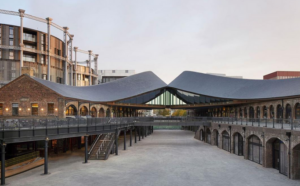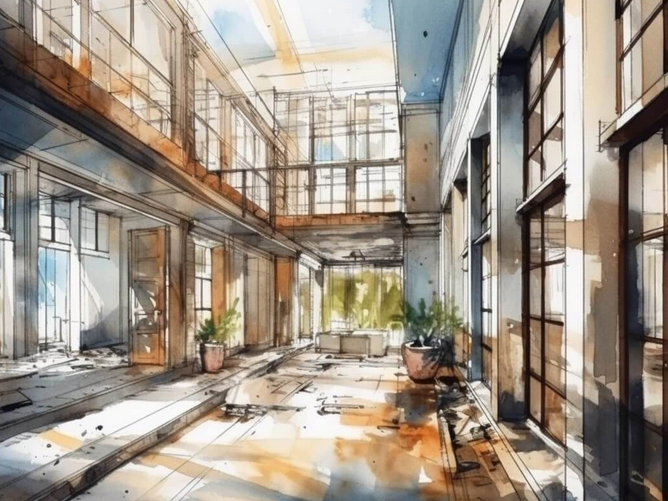Adaptive reuse, the process of transforming old or historic buildings for contemporary use, is a compelling approach that celebrates architectural heritage while breathing new life into existing urban and rural landscapes. This practice not only preserves the character and history of buildings but also promotes sustainability, innovation, and the revitalization of communities. By repurposing and reimagining old structures, architects and designers can create modern, functional spaces that honour the past while meeting the present and future needs of society. Let’s explore the beauty of adaptive reuse and its transformative impact on the built environment.

Preservation of Architectural Heritage:
Adaptive reuse celebrates the historical and architectural significance of old buildings, preserving their unique character, craftsmanship, and cultural narratives. By breathing new life into these structures, architects pay homage to the past while ensuring that architectural heritage remains a vital part of contemporary urban and rural landscapes.
Sustainable Development:
Repurposing existing buildings reduces the environmental impact associated with new construction. Adaptive reuse minimizes demolition waste, conserves raw materials, and reduces energy consumption, making it a sustainable and resource-efficient approach to development. By extending the lifespan of buildings, adaptive reuse promotes environmental stewardship and contributes to the reduction of carbon emissions.
Fostering Vibrant Communities:
Adaptive reuse projects contribute to the revitalization of neighbourhoods and communities. By repurposing old buildings for residential, commercial, cultural, and recreational use, architects create dynamic spaces that attract residents, businesses, and visitors, fostering a sense of place, community, and economic vitality.
Innovative Design Solutions:
The adaptive reuse of old buildings inspires creativity and innovation in architectural design. Architects can reimagine and transform spaces to meet modern needs while honouring the building’s heritage. This process often results in unique, authentic, and culturally enriching environments that captivate and inspire those who inhabit and visit these spaces.
Promotion of Economic Growth:
Reimagining old buildings for new uses stimulates economic development and job creation. Adaptive reuse projects can attract investment, support local businesses, and revitalize underutilized or blighted areas, contributing to the economic health and vitality of communities.
Preserving Cultural Identity:
Old buildings are often reflective of the social, cultural, and economic history of a place. Adaptive reuse projects preserve the local identity and contribute to the continuity of cultural traditions, storytelling, and shared memories, anchoring the present in the narrative of the past.
Conclusion
In conclusion, adaptive reuse is a powerful and transformative approach that harmonizes the preservation of heritage with the imperatives of sustainable development and community regeneration. Architects and designers, through the thoughtful repurposing of old buildings, have the opportunity to create meaningful, sustainable, and culturally rich modern spaces that honour the past while embracing the needs of the present and future. The beauty of adaptive reuse lies in its ability to weave the threads of history into the fabric of contemporary environments, offering a powerful testament to the enduring value of architectural heritage.
